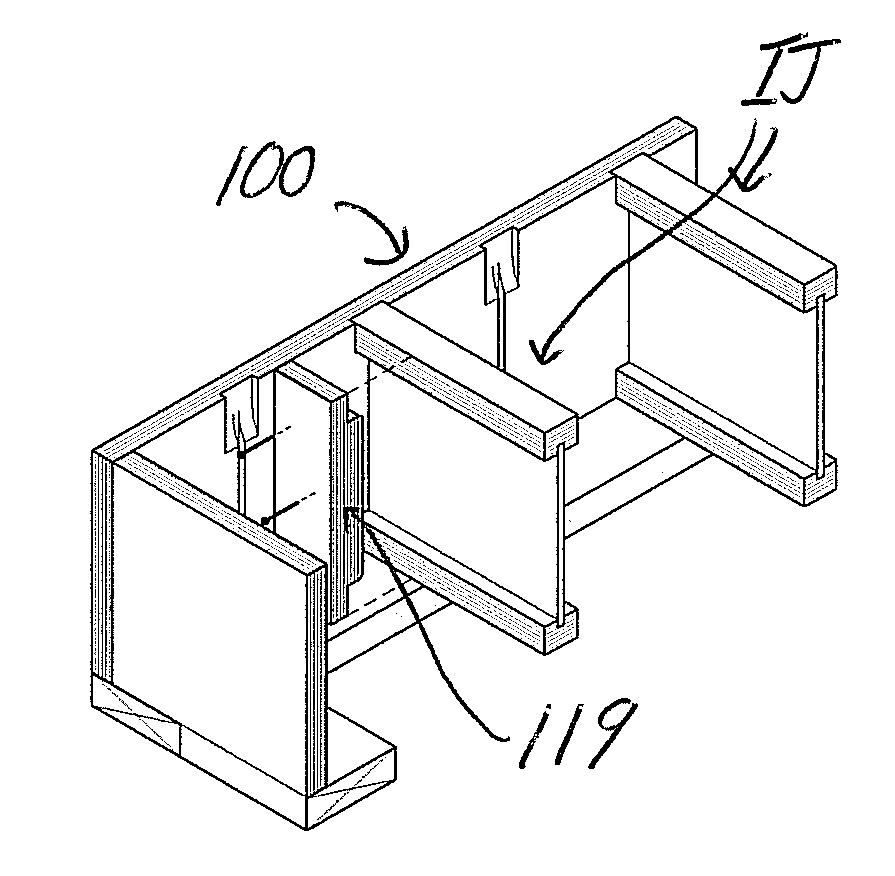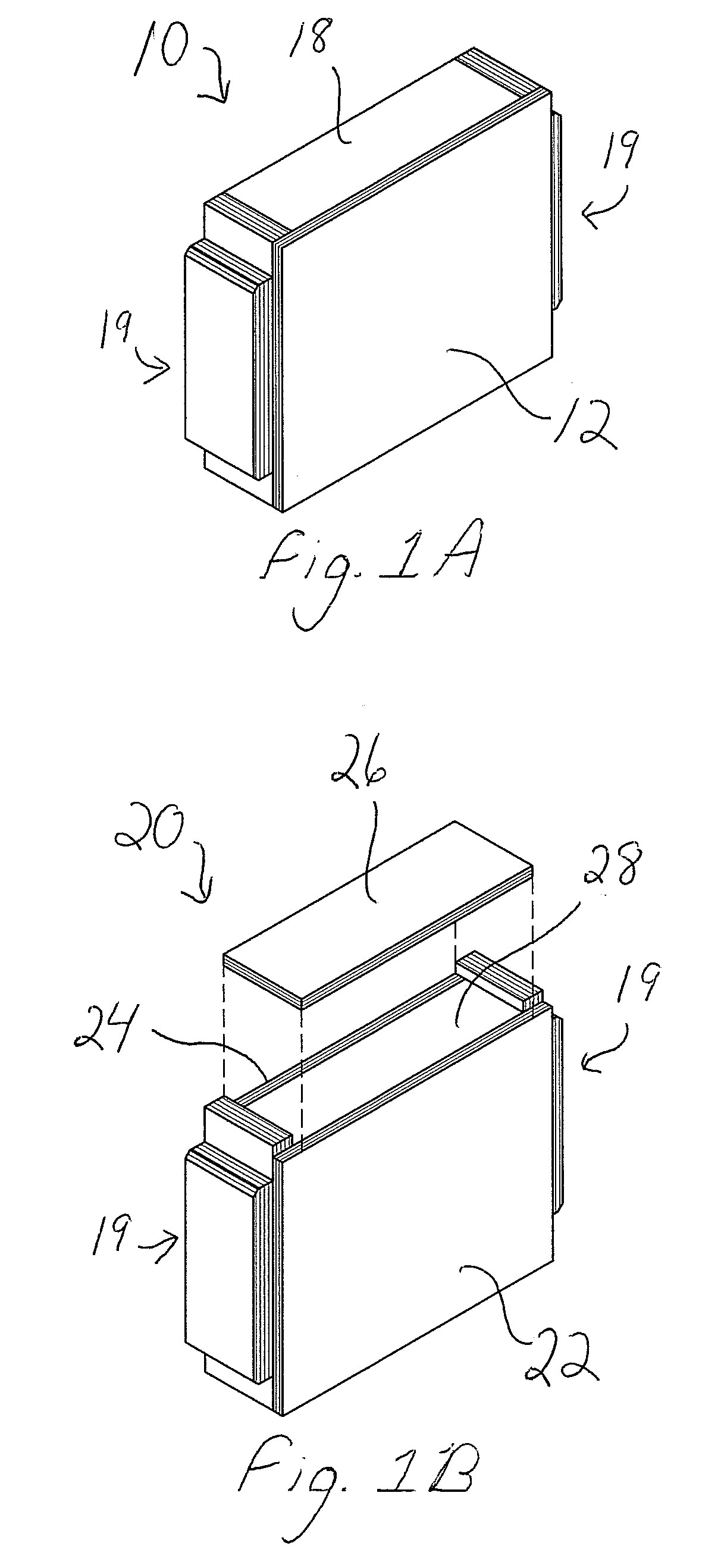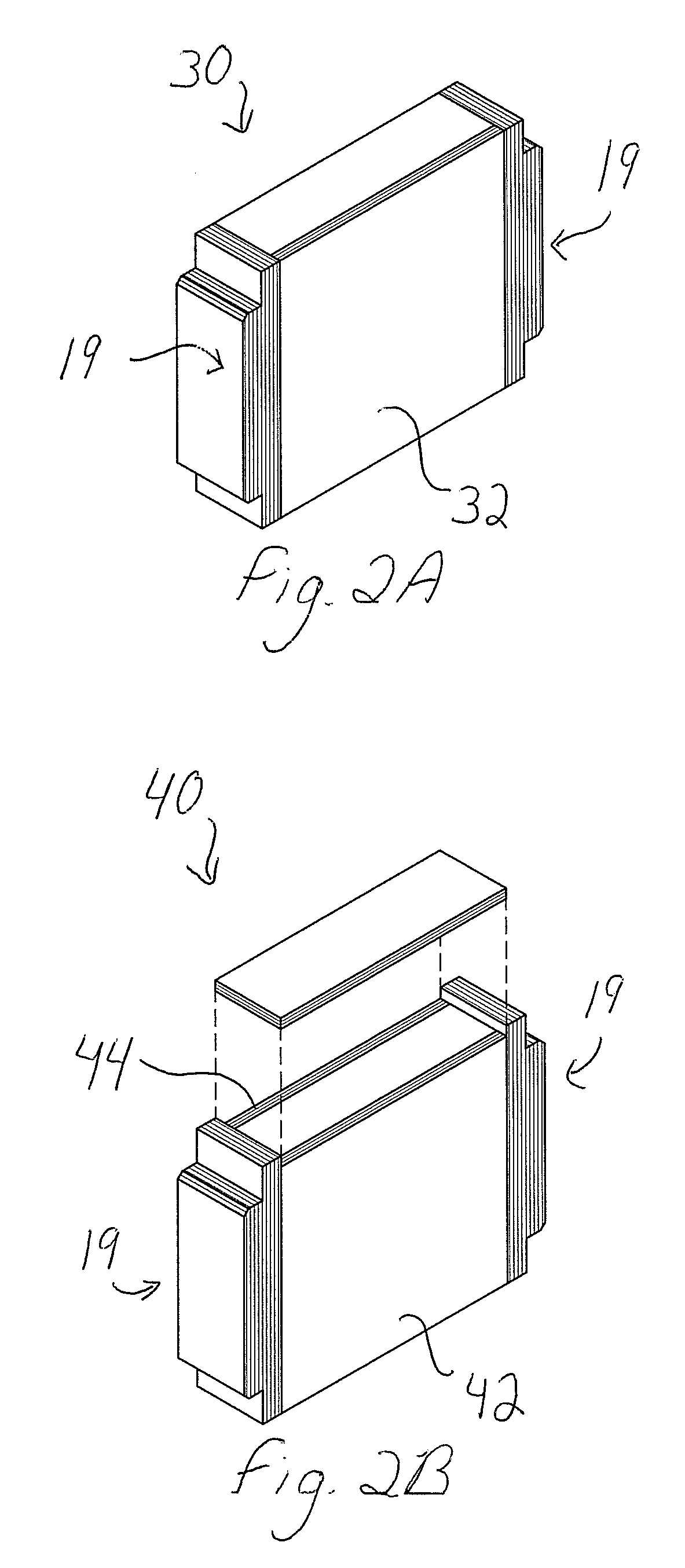Insulated blocking panels and assemblies for i-joist installation in floors and ceilings and methods of installing same
a technology of i-joists and insulating blocks, which is applied in the direction of joists, girders, buildings, etc., can solve the problems of reducing insulation value and substandard installation quality, and achieve the effect of convenient installation and superior load distribution
- Summary
- Abstract
- Description
- Claims
- Application Information
AI Technical Summary
Benefits of technology
Problems solved by technology
Method used
Image
Examples
Embodiment Construction
[0043]Referring to the Figures, there are shown several, but not the only, embodiments of the invented Insulated Blocking Panel and Assembly for I-Joist Installation in Floors and Ceilings and Methods for Installing Same. FIGS. 1A, 1B, 2A, 2B, 3, 4, 5A, and 5B illustrate some, but not the only, embodiments of the insulated blocking panels. The inventors believe these and other embodiments of the invented insulated blocking panels will be beneficial in many I-joist installations using conventional I-joists and conventional rim boards, and, also, in I-joist installations using their earlier-invented apparatus, including their invented rim boards and / or their invented, precision-machined support blocks.
[0044]Regarding embodiments such as those shown in FIGS. 1A, 1B, 2A, 2B, 5A, and 5B, for example, the support blocks are secured and immovably fixed to the foam board and / or the vertical structural panels, prior to installation and preferably at the time of manufacture. Such support bloc...
PUM
 Login to View More
Login to View More Abstract
Description
Claims
Application Information
 Login to View More
Login to View More - R&D
- Intellectual Property
- Life Sciences
- Materials
- Tech Scout
- Unparalleled Data Quality
- Higher Quality Content
- 60% Fewer Hallucinations
Browse by: Latest US Patents, China's latest patents, Technical Efficacy Thesaurus, Application Domain, Technology Topic, Popular Technical Reports.
© 2025 PatSnap. All rights reserved.Legal|Privacy policy|Modern Slavery Act Transparency Statement|Sitemap|About US| Contact US: help@patsnap.com



